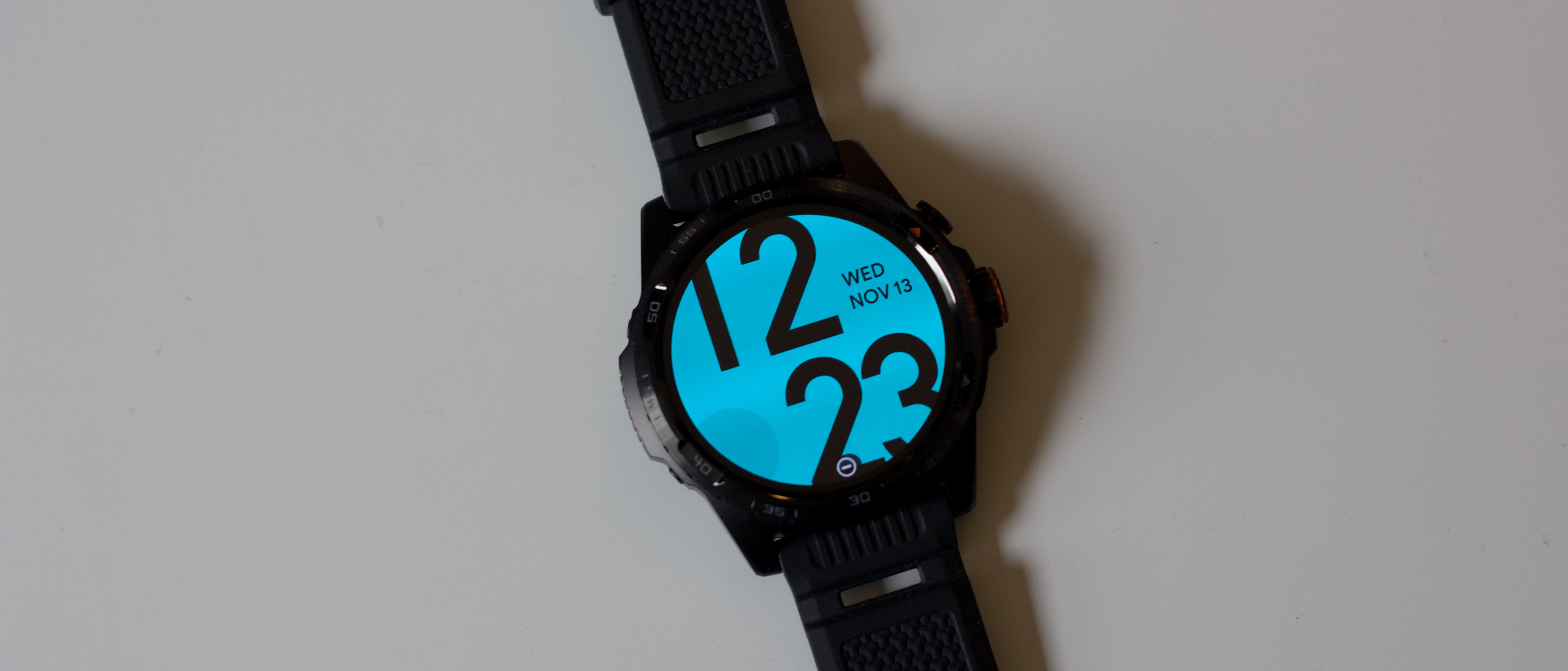
TicWatch Atlas: One minute review
The TicWatch Atlas is a brilliant rugged Android smartwatch and a fantastic alternative to mainstream options like the Google Pixel Watch or the Samsung Galaxy Range. It boasts an impressive chassis made of stainless steel, aluminum, and fiberglass that feels really premium and sturdy, and it’s competitively priced around other Android smartwatches while offering the rugged durability you’d expect from an Apple Watch Ultra or Samsung Galaxy Watch Ultra.
The dual display means you can switch between a healthy-looking AMOLED display or an essentials-only low-power option that’s good for 45 days of battery life. The TicWatch Atlas comes absolutely packed with fitness and health-tracking tools and features, including more than 100 exercises. It also features heart-rate monitoring, sleep tracking, blood oxygen monitoring, and more.
The Snapdragon W5+ chip ensures performance all-round is snappy with no hang-ups, and there’s a wealth of health data at your fingertips. The screen isn’t as vibrant as an Apple Watch display, and blood oxygen readings weren’t always spot on, but overall fitness tracking for calories and heart rate kept up with more expensive Apple Watch alternatives, and the GPS showed pretty solid accuracy.
The TicWatch Atlas currently runs Wear OS 4 with no sign of Wear OS 5 coming any time soon, but for those who can do without the latest software, it’s an extremely enticing option in this price bracket and one of the best Android smartwatches this year.
TicWatch Atlas: Specifications
TicWatch Atlas: Price and Availability
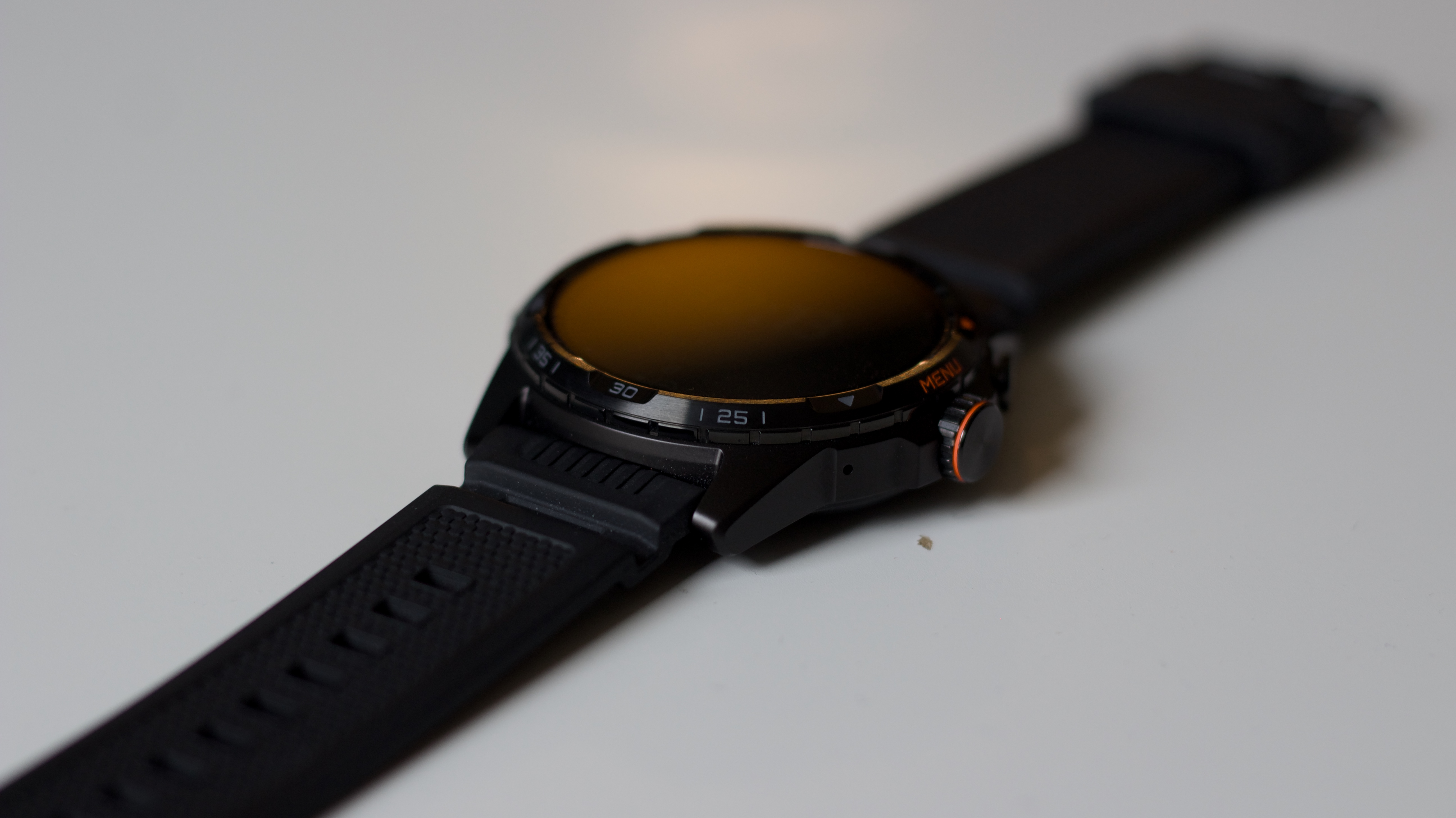
- $349/£329/AU$519
- Two colors
The TicWatch Atlas is available now from Mobvoi.com and Amazon in a multitude of territories. There’s only one size and two colors, retailing at $349 / £329 / AU$519. We’ve seen it officially discounted through Mobvoi’s website and Amazon in the UK to just £264.99. In Wear OS terms, that’s around the same price as the list price of the Galaxy Watch 7, but cheaper than the similarly-sized Pixel Watch 3. It’s also, confusingly, the same price as Ticwatch’s other smartwatch offerings, the Pro 5 Enduro and the regular Pro 5.
- Value score: 4/5
TicWatch Atlas: Design and screen
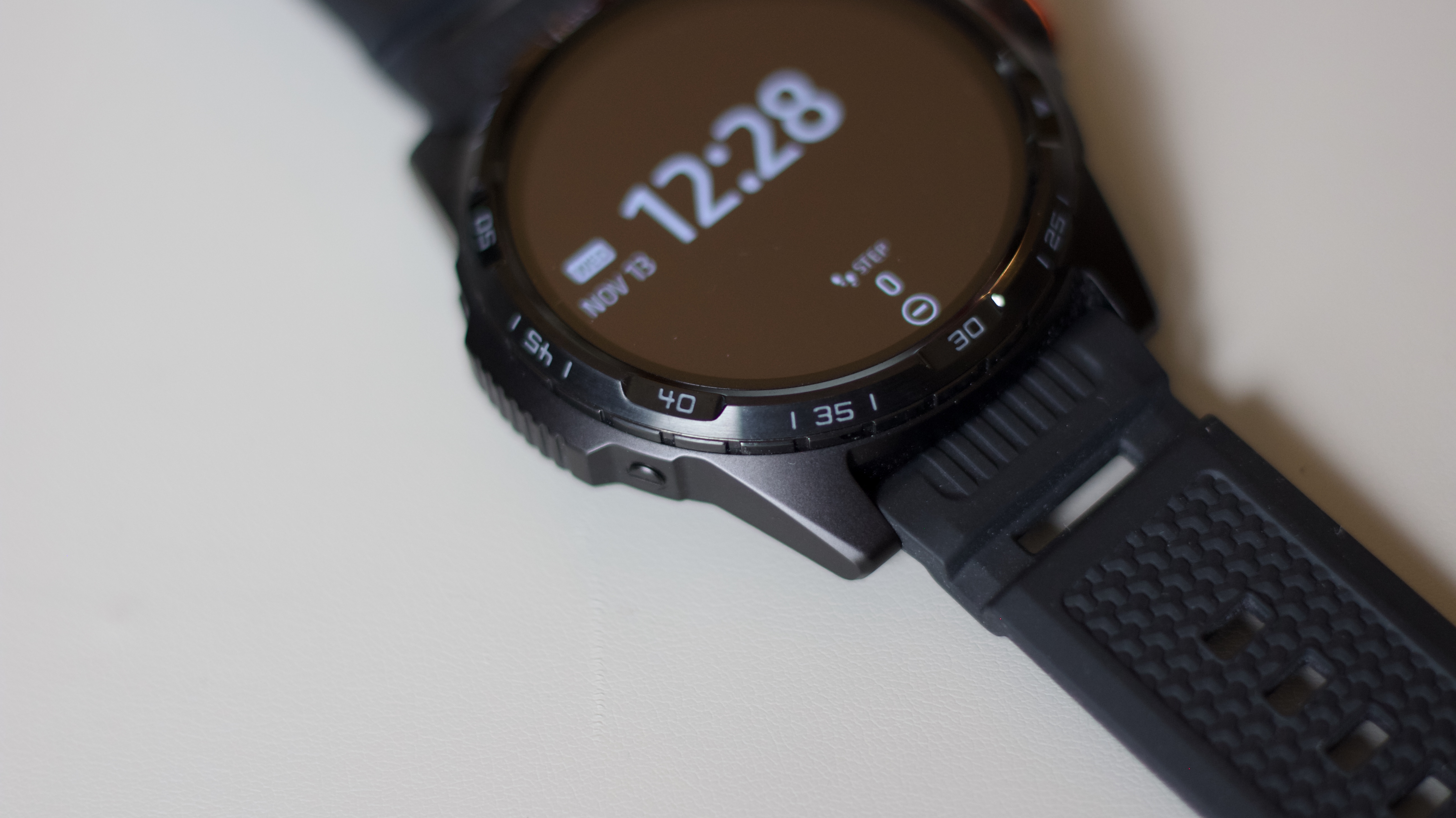
- Premium design
- Very rugged and durable
- Dual display is enticing
Out of the box, the Ticwatch Atlas really dazzles as a rugged and well-designed smartwatch. The circular chassis measures 52.2mm in height by 47.8mm in width, and the whole package is just 12.05mm thick. The watch housing itself is a mixture of stainless steel, 7000-series aluminum, and nylon with fiberglass. That means you aren’t getting the premium titanium finish of an Apple Watch Ultra or the Samsung Galaxy Watch Ultra, but the whole package exudes premium build quality and a rugged durability that really gives you confidence in the watch day-to-day. The TicWatch Atlas is Mobvoi’s adventure-going watch for the great outdoors and the company has really nailed it with this fantastic design.
Garmin fans will find themselves at home here thanks to a raised, chunky bezel that houses a circular AMOLED display, and to one side are a side button and a crown for scrolling. The latter is smooth and precise to operate, and the former takes you to Wear OS 4’s recent apps with a satisfying click, or Google Wallet with a double click.
The fluororubber band shipped as standard is also really excellent – the rubber is soft and grippy, and the metal clasp feels safe and secure to use.
The TicWatch Atlas boasts a dual-display configuration, with an always-on AMOLED and the Ultra-low-power display. Starting with the AMOLED, this tech definitely lags behind options like the Apple Watch Series 10, which looks altogether more vibrant. Upping the brightness to full really improved the experience, but at the default setting I thought it looked ever-so-slightly washed out. However, the text and metrics all look very clear, and the default Wear OS faces show good color performance. Raise-to-wake was a tad sluggish for my liking, but I’m really nitpicking what’s otherwise a very enjoyable experience.
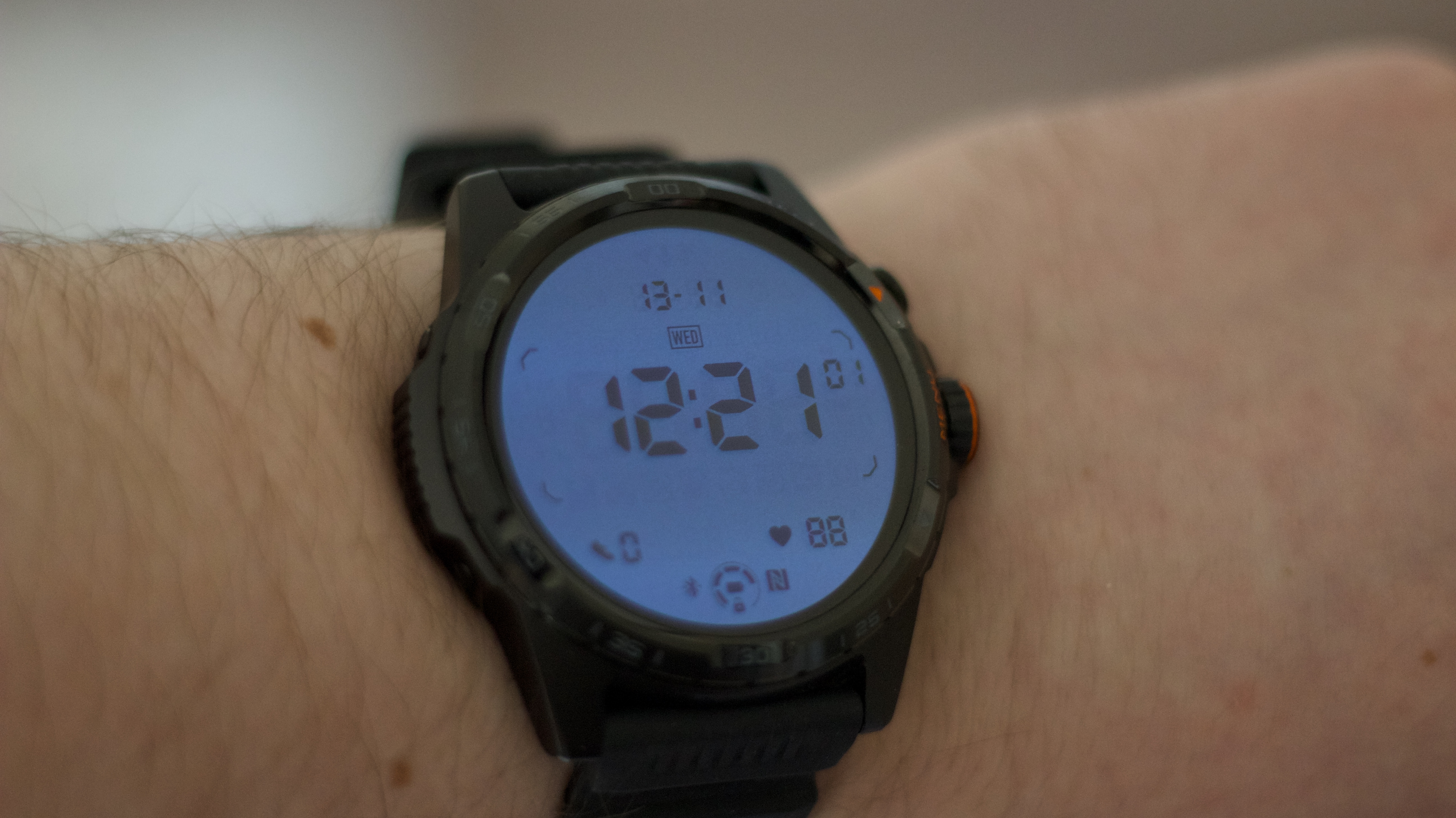
There’s also the Ultra-low-power display, which gives you a slew of essential metrics (date, time, steps, heart rate, battery) in a crisp two-tone format. You can pick the color, and the low-power display also has dynamic color changes that reflect your heart rate, so you can gauge what HR zone you’re running in with the quickest of glances. The real selling point of this Ultra-low-power display, however, is the battery life, with TicWatch promising up to 45 days of use in Essential Mode using this feature.
Overall, the TicWatch Atlas is really comfortable on the wrist, with no noticeable wrist fatigue. At 47.2 grams it’s not a heavy beast, but you’ll definitely notice its presence. As noted, it’s circular and quite a bit wider than your average Apple Watch, which I’d say disqualifies it for use in strength training. That’s because the design, coupled with the protruding crown, lends itself to accidental button presses, a fatal flaw that also hamstrings the Apple Watch.
Worth mentioning design-wise are the Atlas’ durability ratings. It’s 5ATM waterproof-rated for open-water swims, and certified to MIL-STD-810H military-grade durability. Essentially, the TicWatch Atlas can handle almost everything you throw at it, rain or shine.
- Design score: 4/5
TicWatch Atlas: Features
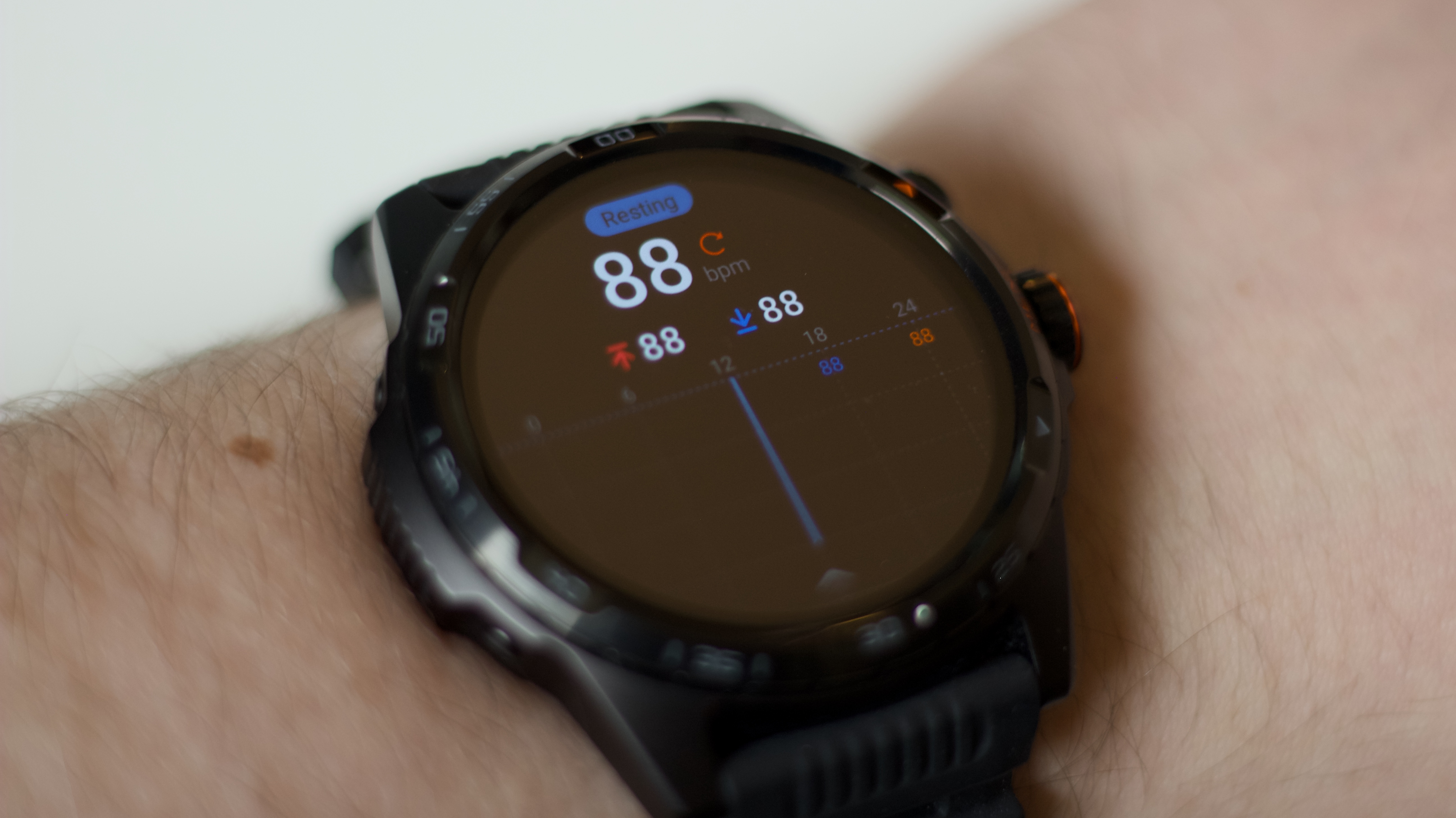
- Packed with fitness-tracking features
- Heart rate monitoring and Afib alerts
- Wear OS 4
TicWatch Atlas arrives sporting Wear OS 4 and a host of impressive features. A lot of these will be familiar to anyone who’s used any of the best Android smartwatches on the market. There are workout tracking modes for over 100 different exercises, including all the usual suspects. You’ll also get 24/7 heart-rate monitoring, recovery time readouts, VO2 Max measurements, calories, blood oxygen, and more.
Overnight there’s sleep tracking which triggers automatically, and health features like irregular heartbeat sensing and atrial fibrillation detection, which are constantly monitored in the background.
Safety features include emergency SOS and Fall Detection, the effectiveness of which I can attest to because I accidentally triggered it during a gym workout when I flopped a bit too dramatically onto a bench while doing barbell bench presses.
Navigation is provided by GPS tracking, which can also give you retrospective routes for your outdoor workouts and is impressively accurate, even when not tethered to a phone. There’s also a compass and barometer, the latter of which will be of particular note to climbers and hikers, who can use it to gauge height and atmospheric conditions that could indicate changes in the weather.
Another standout feature that I wasn’t able to test was Heat Map. With GPS and network connectivity, you can track your heat map for ball games including American football, Aussie rules, basketball, rugby, soccer, and tennis, as well as Frisbee, with your activity displayed as a satellite image of your exploits that you can customize and share with friends.
There’s also TicMotion, proactive tracking for outdoor workouts that can detect walking, running, or cycling without the need for user input, providing heart rate, calories, and VO2 max info automatically. I’ve already mentioned the dynamic screen, which changes color to match your heart rate in Ultra-low-power mode, another epic feature for fitness enthusiasts.
You also get the usual slew of Wear OS features from Google, including G-Suite integration for Maps, Calendar, and Gmail, apps from the Play Store, messaging, Google Wallet, and more. 32GB of onboard storage ensures you can load music and playlists onto your device, so you can run without your smartphone if you’d prefer
Overall, the TicWatch Atlas is packed with features for a $329 smartwatch. The feature-set generally lends itself to the adventuring fitness enthusiast, there is a lot going on when it comes to fitness tracking, health, performance, and more. I’d be inclined to compare the Atlas more to some of the best Garmin watches on the market, rather than something like a Google Pixel Watch 3. As with TicWatch’s Pro 5 offering, LTE is the only glaring omission. Mobvoi has also confirmed to us that there isn’t currently any information about Wear OS 5 support, the rollout of which to old Pixel models was confirmed recently, so this doesn’t put it at a huge disadvantage versus other Android rivals.
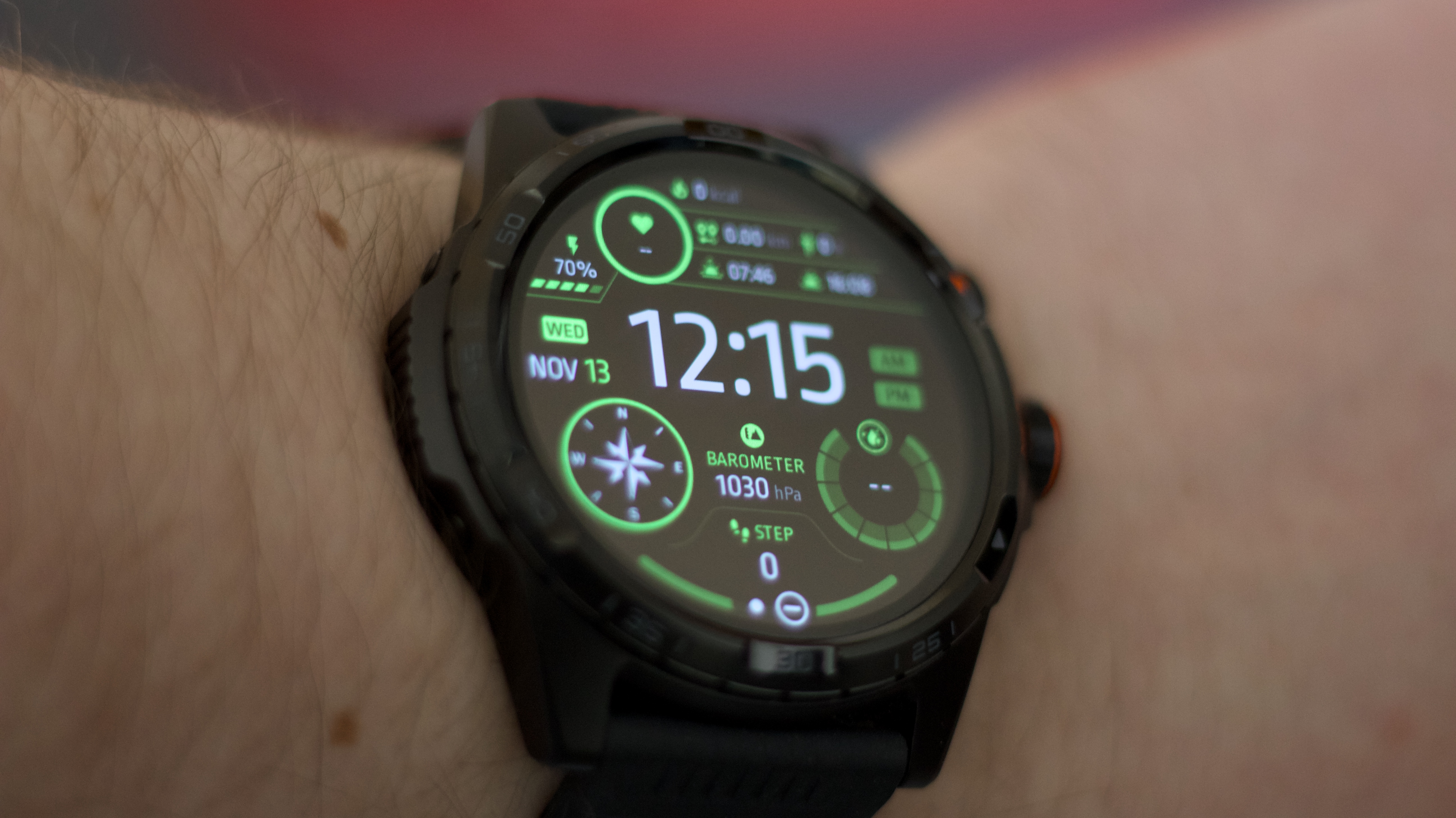
- Features score: 4.5/5
TicWatch Atlas: Performance
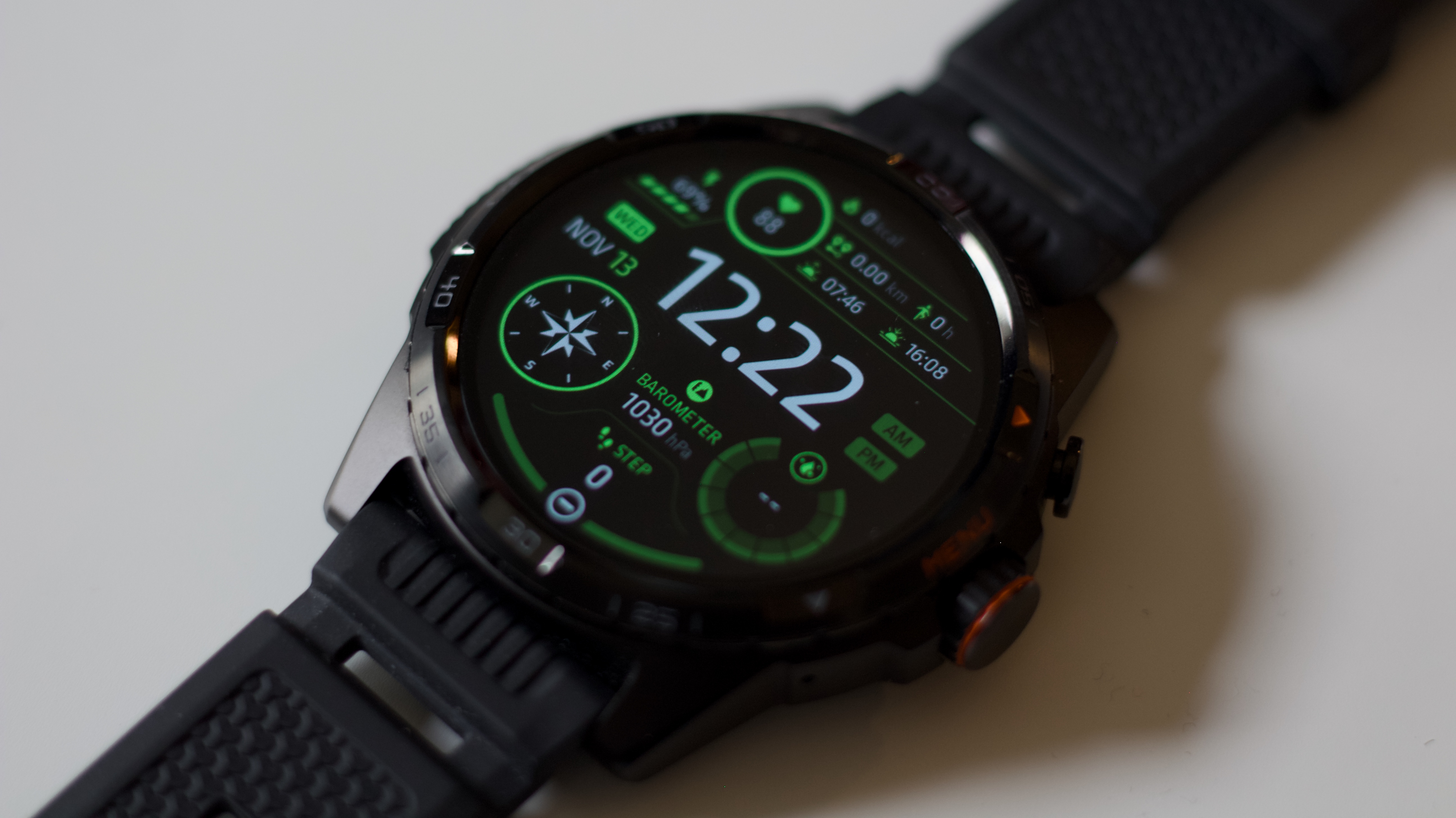
- Snappy processor
- Accurate metrics
- Phenomenal battery life
In my three weeks using the Atlas TicWatch I’ve been really impressed by the overall performance. My daily driver is usually an Apple Watch Series 10, or latterly, the Ultra 2. Personally, I find that the animations of Wear OS 4 leave a bit to be desired, with the lack of bounce and responsiveness versus watchOS 11 making for a more clunky experience; however, the TicWatch’s Snapdragon W5+ chip is more than enough to handle Wear OS. The user experience overall is snappy and responsive, with no processor hang-ups. The Atlas can process a lot of workout data including heart rate metrics, steps and calories, and cadence, and it’s definitely a solid piece of kit.
Accuracy-wise, it leaves little to be desired. In side-by-side tests with my $699 Apple Watch Ultra 2, the TicWatch broadly kept up with heart rate measurements including changes to my pulse. In a 1km test walk, the TicWatch slightly over-egged the distance, giving me 1km when I’d only walked 956m, with a slightly ambitious GPS route that artificially inflated the distance. However, that’s not a massive margin of error, and the Atlas clocked my average heart rate at 89bpm compared to the Apple Watch’s 90, and calories burned at 58 vs Apple Watch’s 60. For almost everyone that’s a perfectly acceptable margin of error, and an impressive set of results. In fact, I was surprised that workout summaries and metrics generally felt more comprehensive than with the Apple Watch and iOS, with step count, VO2 max, average speed, and workout zones served up in addition to Apple’s data offering.
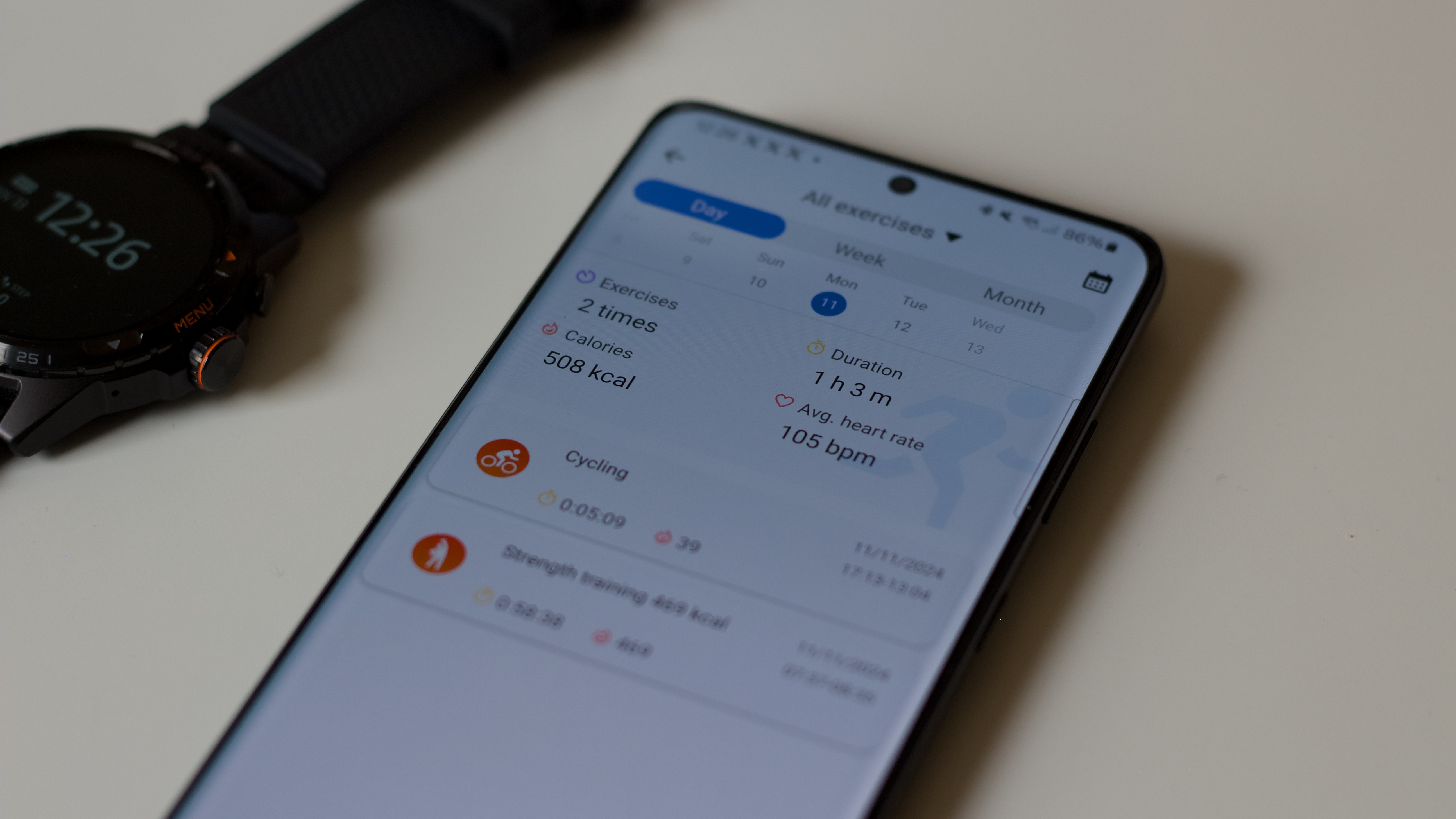
The only suspect reading I’ve found on the Atlas is blood oxygen, with a couple of erratic readings suggesting that my level was changing quite rapidly to as low as 92% percent and as high as 100%. It seems to have evened out over time, but I’ve wondered if the TicWatch has been giving me readings even when it wasn’t quite able to. On other occasions, however, it matched the Apple Watch in more controlled conditions. Given that this measurement relies heavily on you being at rest and having your watch fitted properly, this could be an error, and it’s one I’m keeping an eye on with continued testing.
Metrics and results are delivered via the Mobvoi Health app, available on the Google Play Store. It’s certainly comprehensive and colorful, but the app’s design and interface aren’t enthralling. Still, it’s practical and easy to navigate.
The aforementioned TicMotion workout detection is impressive, as is the automatic sleep tracking, however, the Atlas’ party piece is definitely its battery life. The TicWatch Atlas is rated for 90 hours of use as a regular smartwatch, or an eye-watering 45 days using the ultra-low-power display. In three weeks of use, I’ve only had to charge it twice, and it easily clears three days of constant use on a single charge, including one workout a day. Charging speed is also impressive, and the standard included cable is good for 2 days of usage from just 30 minutes of charging. Otherwise, a full charge in my experience takes about 90 minutes, and TicWatch’s interface shows the battery charging in real-time to two decimal places for a reassuring sense of progress.
- Performance score: 4.5/5
TicWatch Atlas review: Scorecard
TicWatch Atlas: Should I buy?
Buy it if...
Don't buy it if...
TicWatch Atlas: How we tested
I used the TicWatch Atlas for almost three weeks as my main smartwatch. It was connected to a Samsung S21 Ultra, on which I tested the Mobvoi Health app and connectivity. I used the watch to track my sleeping, as well as multiple strength and running workouts. I also conducted controlled testing to directly compare metrics to the Apple Watch Ultra 2 and the Series 10, including a 1km test walk to measure the accuracy of heart rate and calorie tracking.
TicWatch Atlas: Also consider
First reviewed: November 2024







